Today we continue with part two of my travelogue series on my recent Hokkaido Winter Photography Adventure tour for 2017. This was an amazing trip with a group of very talented and enthusiastic photographers, and probably the most productive of my Hokkaido Landscape tours so far, thanks to the incredible weather conditions we were presented with.
When I talk about good weather conditions though, you might think I’m talking about beautiful blue skies, but that is totally the other end of the scale. For this tour we need gray skies and lots of snow. Day four of this tour was perhaps a little too extreme though, even for my liking. As we made our way from Biei over to the West coast, a cold weather front that was slamming down on Hokkaido had blocked roads going south, but luckily we were heading north, and our excellent driver was able to battle through to Haboro where we’d spend the next two nights.
We had to abandon a couple of locations that I was hoping to shoot, for today at least, as high winds and spray from the sea would have made them pointless, but before we went to the hotel, we did get to spend a good chunk of time at the Konpira Shrine Torii, which is a Shinto Gate in the sea, that you can see in this photograph (below).
This was a real battle with the elements, as the wind was so strong, even my sturdy Really Right Stuff tripod was shuddering during these 1/15 of a second exposures. I wanted to do a little longer to capture more wave movement, but they just weren’t working even with my pushing down hard on the tripod to keep it from moving, but this shutter speed just about worked.
I’m happy with the position of these waves, and think this photo at least partially conveys how harsh the weather was. I was shooting at f/11 and an ISO of 400 to maintain that 1/15 of a second shutter speed, and was happy to have come away with at least a few shots that were actually sharp in these conditions.
The following morning, we drove back down the coast to the first location that we’d abandoned the previous day, and when we arrived, there was a patch of heavy snow, so we went with our driver to turn the bus around, and as we got back, we actually had a pleasant clear patch that lasted the time we were there, but still gave us some beautiful dark skies while highlighting the texture in the snow quite beautifully, as you can see in this photo (below).
The sun was also catching the distant set of tetrapods in the sea, giving a nice highlight on them too, which I thought was nice. The rough sea was still causing a lot of white water though, and this time I chose to smooth that over to a degree with a two minute shutter speed. I used a 10 stop and a 3 stop neutral density filter nested, for 13 stops of additional darkness, which was perfect for these lighting conditions. I was back to my old faithful aperture of f/14 and my ISO was set to 100.
I was continuing to use my new Mark II 24-105mm lens for much of my work, as it’s wonderfully sharp and very versatile with that wide zoom range, but it wasn’t quite wide enough for the next photo (below) which I shot at 14mm with my 11-24mm f/4 lens.
For this photo I wanted to include the full arch of driftwood under the snow on the beach, but also include that expanse of sky with the stratocumulus clouds just above the horizon, but also that wispy bank of snow cloud that might be classed as cirrus clouds in the foreground. I love it when various weather conditions are this close together, because the sky changes so quickly and gives us lots of various opportunities. I was also here still playing with that beautiful texture in the snow. I shot this at 1/80 of a second at f/14, ISO 100.
As we drove back up the coast to the second location that we’d skipped the previous day, the snow set in again for a while, and I couldn’t help thinking once again that we were getting the exact types of weather for each scene that we shot as and when we needed it. It really was uncanny.
As we walked down to the beach where I wanted to photograph the tetrapods, we were presented with this scene, that once again plays not only on the snow texture, but the bright sun also caused this wonderful shadow which is obviously a major part of this image (below).
Once again, it was also great that we had a nice dramatic sky in the background, rather than clear blue, that you might expect to see with the foreground being so bright. For this I also used a total of thirteen stops of neutral density for a one minute thirty-second exposure at f/14, with ISO 100.
As I’ve mentioned before, all of these images were converted to black and white in Capture One Pro, and because the new Mark II 24-105mm f/4 lens is still not supported for Lens Correction, I am still manually selecting the old 24-105mm to fix the slight bowing that is easy to see on the horizon on a photograph like this. My 11-24mm lens is now supported, which is great, although it actually has much less distortion than the 24-105mm Mark II anyway, so I’m hoping that Phase One get to this soon.
Once we had all photographed this scene in our various ways, all different and all unique, we trampled through this pristine snow down to the beach, and went over to a group of tetrapods that I know of that are half buried in the sand. We found that there was a rope and a lot of old fishing net tangled around a tree trunk that was washed up on the tetrapods, so I got a large knife from our bus, and cut most of that away, and proceeded to shoot this photograph (below).
When photographing the sea, especially when there are some good waves, I sometimes like to use a shutter speed of 1 second, which enables me to capture a good amount of movement in the sea without smoothing it completely over. I also often use a two-second timer when shooting landscapes, so that I can take my hand away from the camera before the exposure, which reduces the risk of me introducing vibration through my hands.
In cases like this though, when I want more control over the actual moment at which the exposure starts, I do still use a cable release, and turn off the two-second timer. This enabled me to perfectly time this image as a large wave washed up well past the tetrapods and tree trunk, and merge with a stream of water that was running down to the sea from the right to the left of this frame. This caused some beautiful swirls in the water, and I think my one-second shutter speed captured this perfectly on this occasion.
I also dropped on my large ND filters again, for another shot of the same scene, but for a three minute exposure this time. I like both photographs, but you can see that they are although obviously the same subject, the scene is depicted very differently by increasing the shutter speed from one to 180 seconds, allowing the sea, which was still quite rough, to smooth over to create this much more silky and surreal look (below).
We can still see a trace of how the sea water washes up past the tetrapods, and merges with the stream flowing from right to left, and causing the trail of the water to flow around the tetrapods and back to the sea. Both of these images were shot at f/14 with ISO 100, and a focal length of 43mm, although I did compose them slightly differently.
We went for lunch after this session, and then went back to the Konpira Shrine with the Torii gate in the sea that we visited at the end of the previous day. With the storm now gone, we didn’t have to battle with the wind, but the sea often takes an extra day or so to calm down, so we still had some great waves that we could now photograph with much slower shutter speeds, such as the 50 seconds that I used for this photograph (below).
Again, I was using my cable release, and timing my shots so that they started when higher than usual waves washed the foreground, but then at 50 seconds, the sea continued to wash up high and smooth over the gaps between the rocks. I like this shot mostly because there is a patch of highly textured foreground in the bottom right corner that is covered in snow and partly frozen, which I think adds a nice additional element of interest. I also like how the rough sea makes the line of tetrapods to the right slightly less defined than the Torii gate and the foreground. This gives a sense of depth to the image.
The following day, we were to drive a few hours further North to Wakkanai, where we’d spend another two nights. On the way, there’s a spot that I’ve found where there are a number of different types of tetrapods. Technically, only a certain type of wave breakers with four legs, are called Tetrapods. Using the word tetrapod to simply mean a wave breaker, this spot offers nice varied layers of them, which I love photographing when they are covered in snow, as we see in this photograph (below).
What attracts me to this particular image is that I was able to place these large balls that look like those plastic practice golf balls, completely covered by snow, all along the foreground. On this trip, I’d invited a talented videographer named Rob Bampton to video this tour, and I will be sharing the results of that probably in March, when we’ve had a chance to edit the video.
Rob asked me at this location though, why I hadn’t included the horizon in my composition. I actually had been shooting both, and will share another in a moment. My reason for not including the horizon in some of these images though, is because it enables me to simplify the shot a little more. Here I think just having the three distinct layers works well, and enables us to view each layer and appreciate the entire composition for its simplicity and minimalism.
In this next shot (below) I’d taken a few steps forward, to reveal an extra layer of golf-ball tetrapods down in the water, and an extra layer of tetrapods in the sea to the right. Here I feel that the additional layers make the shot intrinsically more complicated, and the wider focal length and more acute angle also makes the horizon closer to the top right corner of the tetrapods, so I think including the distant horizon works better for this composition.
I guess the point I want to make here though, is that I don’t think we necessarily need to include a horizon, just because it’s there, just out of frame. I think we should include or exclude any element only when it adds to the composition, as I feel it does in this second image from this location. Another reason I think it works in this second image, is because of the acute angle, the horizon helps to cap off and rebalance the image.
In the previous image, the top layer of tetrapods is already almost straight, and doesn’t necessarily need to be rebalanced. Both images were physically perfectly level by the way. I always use the digital level in my camera, and unless I have a creative reason to photograph a screen skewed, I generally have it straight.
A little further on our journey, we stopped for a toilet break at a place in the middle of nowhere, were there is a huge line of wind turbines, harvesting the wind to create electricity. The line of turbines that you see in this image is actually only about half of them. There is a similar number to my back as I shot this photograph (below).
We were in a bit of a snow storm again, with high winds and snow blowing across the scene, so we just grabbed some shots from a snow bank before moving on, but I like this shot enough to share it with you. This is also coming back somewhat to something that I mentioned in my 2016 top ten images podcast a few weeks ago, which is that I am tending more and more to add a human element to many of my photographs.
Thinking about it, that may well be a tendency I’m developing more through running this tour, as much of what we do after the first three days is about man made objects in the landscape, such as the tetrapods, the Shinto Torii gate, this wind farm, or the boat graveyard that we visited after this. Because we were shooting hand-held, I increased my ISO to 200, to give me a 1/100 of a second exposure at f/14, my go-to aperture for landscape work.
After our rest-room break, we forged along the coast, to one of my favorite spots on this tour, the boat graveyard. We would come back to this location the following day, but this is my favorite shot from the end of day six (below). Once again we found ourselves on the edge of a weather front, with flurries of snow, sometimes quite heavy, giving way to breaks in the clouds that made for some quite dramatic skies.
I shot this at f/14 with a 1/8 of a second shutter speed, at ISO 100, so you can probably appreciate once again that the available light levels were quite low for a daytime photograph. This is partly what makes these locations so special though. We have some crazy skies in the next few images that I’ll share from this location in next week’s episode, so I hope you’ll stay tuned for that.
Hokkaido Winter Landscape Photography Adventure 2018
We’ll wrap it up there for this second travelogue, and pick up the trail again next week at the start of day seven. I have now updated the tour page and started taking bookings for the 2018 Hokkaido Winter Landscape Photography Adventure tour and workshop, so if you think you might be interested, please do take a look. You can find the page at https://mbp.ac/hlpa, and if you have any questions at all, please drop me a line via our contact page.
Show Notes
See details of the tour and sign up for next year here: https://mbp.ac/hlpa
Subscribe in iTunes for Enhanced Podcasts delivered automatically to your computer.
Download this Podcast in MP3 format (Audio Only).
Download this Podcast in Enhanced Podcast M4A format. This requires Apple iTunes or Quicktime to view/listen.

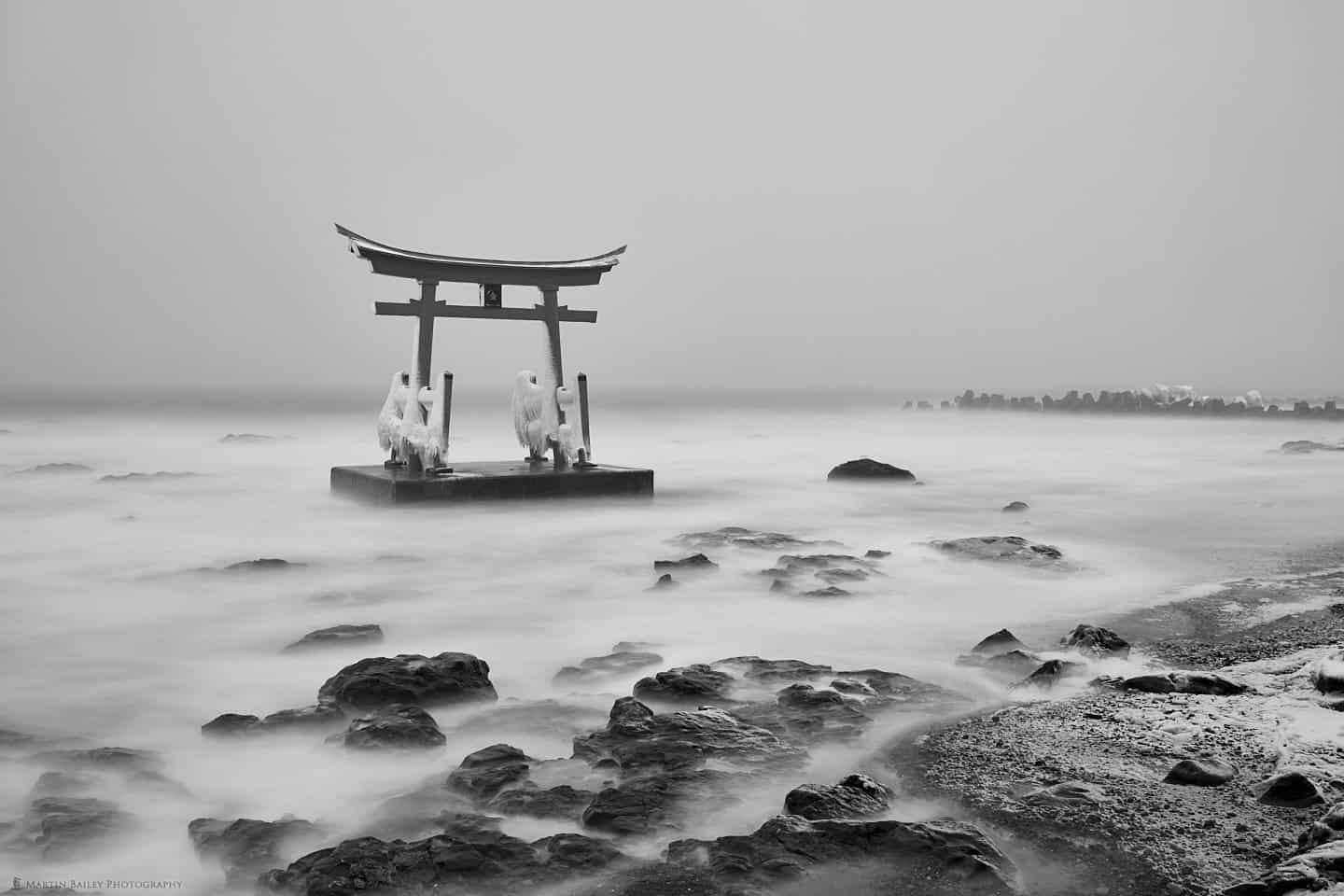
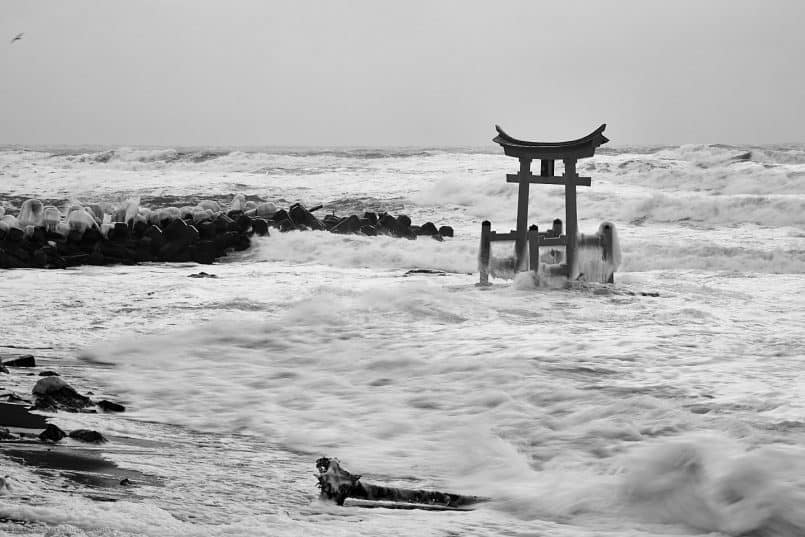
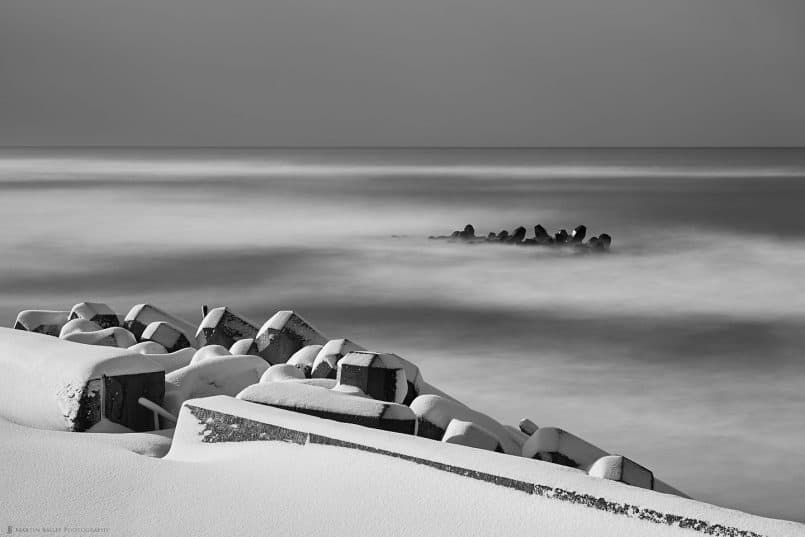
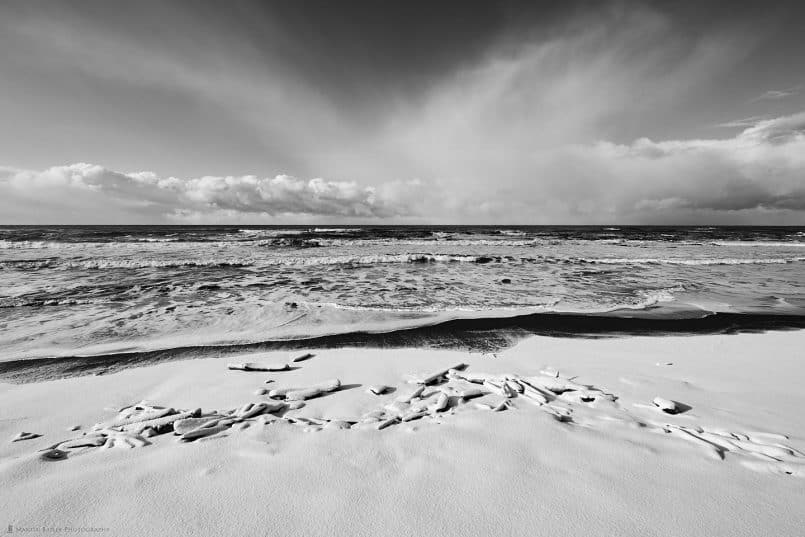
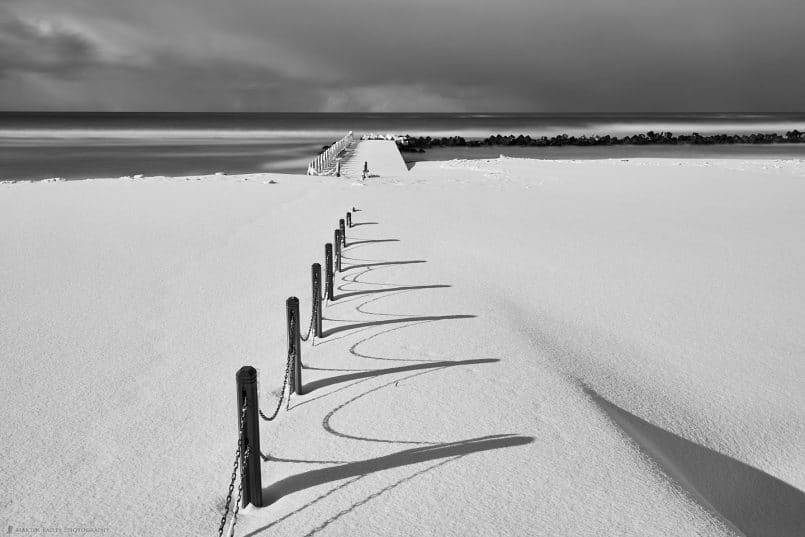

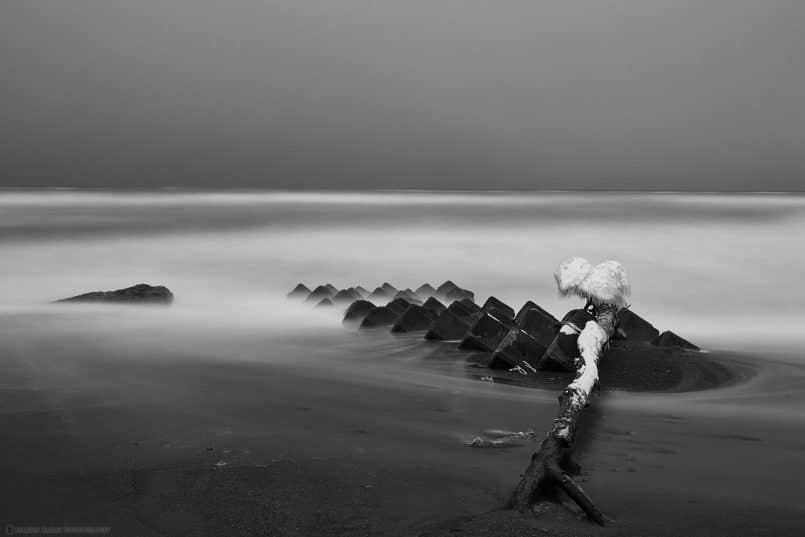
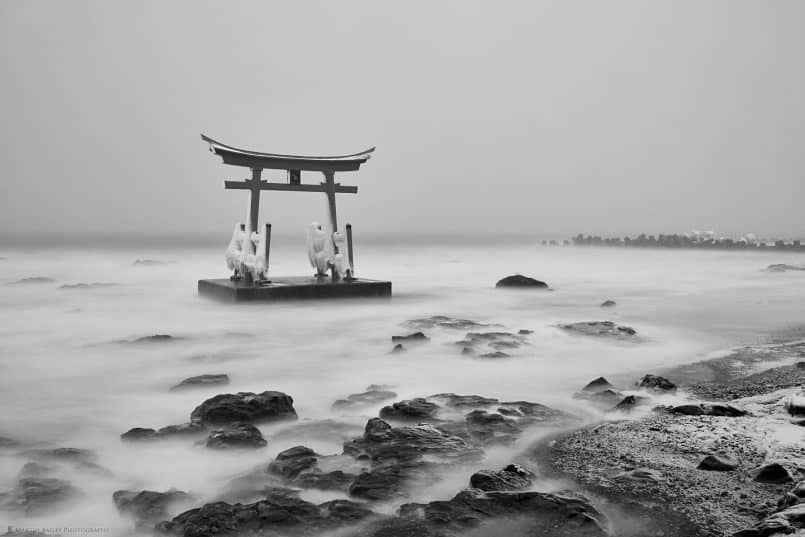
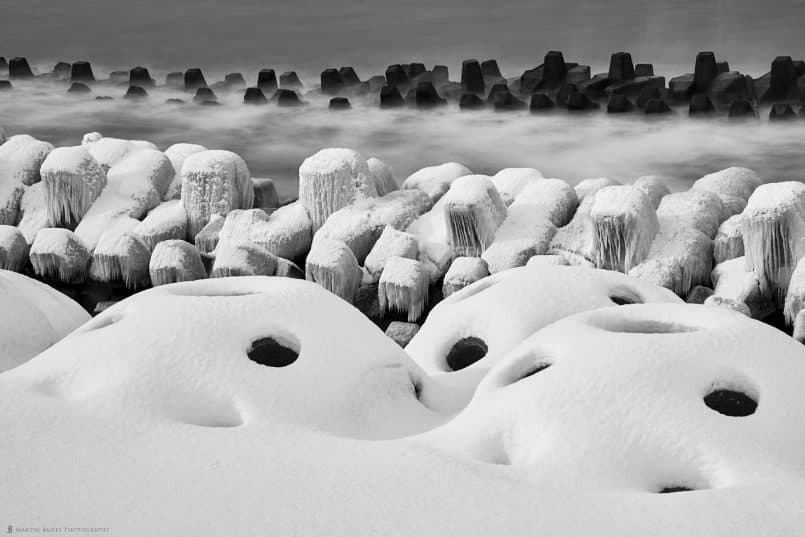
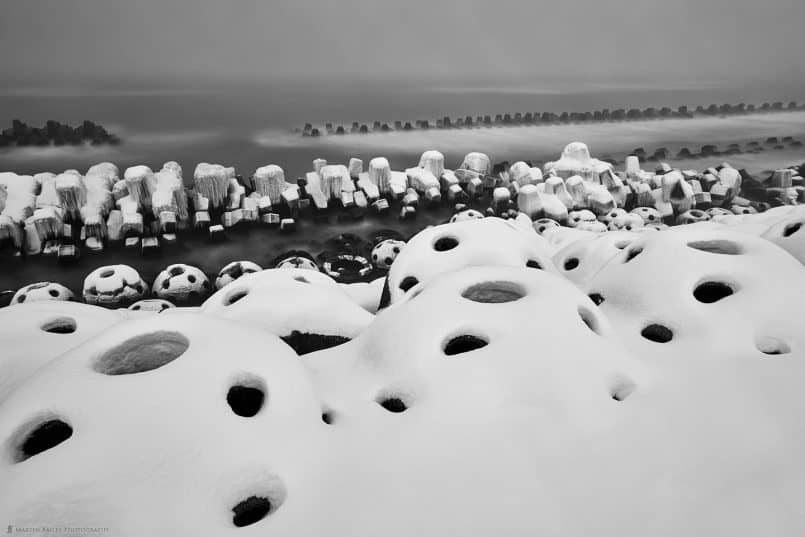
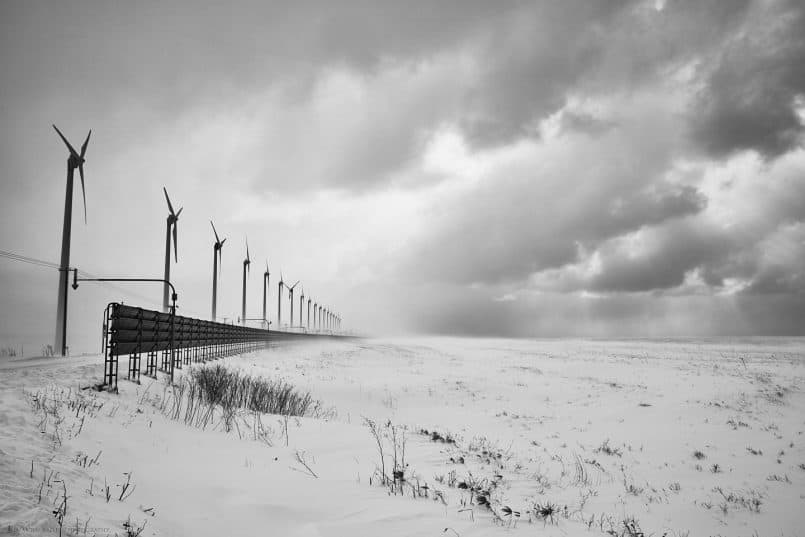
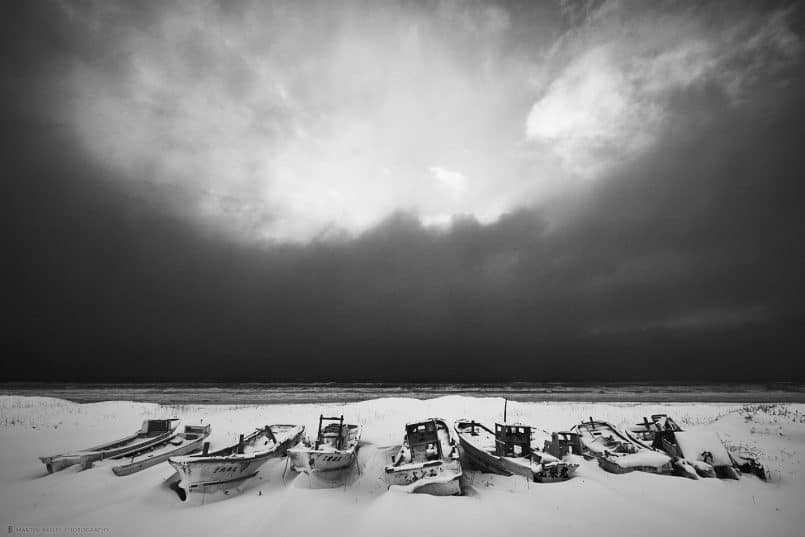
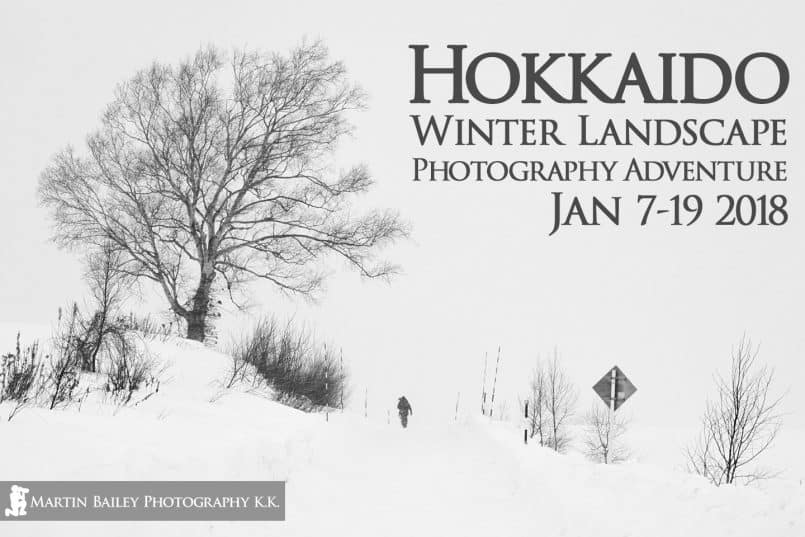

Breathtaking shots Martin! I was painting while listening to this one and half expected to see a lot of Squid/Octopi shots (cephalopod vs. tetrapod) until you explained that they are wave breakers. I love the atmosphere and quality of the black and white. I also love to shoot the ocean, I equate it to a partnered dance, leading into the surf as the waves recede and shimmying back as the waves come forward.
Best,
Thom
Thanks Thom! I’m pleased you enjoyed these photos.
Ha ha, I see what you mean about the squid/octopi.
I’m enjoying the black and white in Capture One Pro too. I’m taking my shots a long way from the original, but not quite as contrast as I used to go in Silver Efex. The results are a little more subdued, but I’m enjoying the look.
I also like your idea that shooting the ocean is like a dance. Very cool.
Thanks for taking the time to listen, and to comment Thom!
BTW, do you have your paintings available to see online anywhere? I’d love to see your work.
Regards,
Martin.
I was a huge fan of using silver efex and the nik collection as well and have also ditched it with my migration to capture one. I’m really enjoying the quality and textures I’m getting editing my Japan shots in capture one. (slow and steady on those still, American politics and commissions are eating up a lot of my time).
I have a small business painting pet portraits, believe it or not! haha
I’d say they are a far step away from what I have painted for my own personal art but they are a great deal of fun to do. The pets are in acrylic but I am a much bigger fan of oils and gold leaf for my own work.
Any who… here is my instagram for my pet business @thompaintspets and here is a link to a few paintings I did with a tablet and photoshop http://thom.club/new-index/#/concept-drawings/ . The gold leaf and oil stuff have been on the back burner for a bit and I don’t have anything online currently except one image that isn’t so great; http://tinyurl.com/jm8kho9 .
I believe I read somewhere that you paint as well? I’d love to see your work!
Oh, me too. I loved Silver Efex and Color Efex, but I did not love having to create a TIFF file for images that I used it on. It always seemed like a waste of disk space, and I didn’t like how the modifications were so final. Black and white conversations often need time to mature, and tweak, as you live with the images. Even though I saved a preset when I did something new, I hated have to reprocess work as my tastes changed. All of that is over now. 🙂
That’s so cool that you paint pet portraits. They’re great too. Not overdone, and they have a lot of character.
The Photoshop paintings are very cool too. I used to enjoy painting, but don’t have time now. I tried on the iPad for a while, and that was fun, but again, time prevents me from really getting into that. I had a few old oil paintings in the UK, but I don’t even know where they are now unfortunately.
I guess all of my creative energy that I direct towards a hobby, as opposed to my photography, now goes to making digital music. If I get time to do something other than work now, I practice finger drumming or the keyboard, or a new synth etc.
Yeah Nik and silver were way too clunky, it’s a shame they didnt throw some of that google money at integrating them better. It was annoying and space demanding to create tifs but one thing that was nice was that the mods could be kept as a layer so I could dial down or remove as needed. It’s funny you mention how your images need time to mature. I find myself wanting to completely reassess my entire collection of landscape photography dating back to 2013 after switching from lightroom but at the rate I edit I’d be done in 10 years and then my tastes would change again.
Another photoshop tool I have great fun using is Tony Kuyper’s TK Action Panel. Have you heard of it?
Thanks for checking out my paintings! I find switching between photography and painting to be a nice balance and the two complement each other well. Its funny I will learn something about painting through photography and visa versa sometimes. Digital music is also something I’ve wanted to get into but my hobby card is already too full. lol
Email me a link if you have any tunes online!
Yes, that’s true if you work on the files as a Smart Object in Photoshop, but I didn’t like that method, generally preferring to just open the files directly in SEP from Lightroom (at that time) so my changes were baked in.
I have my entire collection in Capture One Pro now, and I’m reprocessing old images as I need them. I’m hoping to update my portfolios soon for example, and I’ll need to revisit most of the images that I already have in each collection. This suits me though. It will take more time to do some tasks, but I think it’s worth it. The main thing is that everything I’ve shot since last July is now in Capture One, and that makes me happy. 🙂
I’ve heard TK Action Panel, but don’t have a need for it really. I don’t work in Photoshop enough to warrant it.
I can certainly see how photography and painting complement each other, and probably feed each other.
I don’t release music tracks as such. A lot of the time I just enjoy making the music, and don’t even record it. I need to reword it, but the music at the start and finish of the podcast is mine, and the latest thing that I’m relatively happy with, although it was rushed, is the music in my Namibia video here: https://martinbaileyphotography.com/portfolio_page/namibia-video/